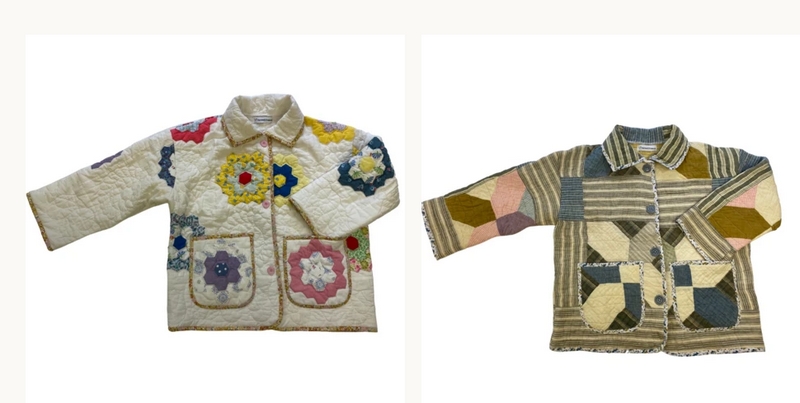Shifts in fashion can often be signposted through semantics. Take the word “deadstock”. Formally an industry term often meaning fabric unused by the manufacturer, it has recently become part of our general parlance. Brands that use deadstock in their designs are increasingly on the radars of consumers, who appreciate the idea of saving waste fabric from landfill. The fact that we are even discussing this in a fashion article suggests sustainability is becoming a priority in a post-pandemic world.
Of course, like with most buzzwords, there is more to deadstock than it first appears. In some corners of fashion, the term is more likely to refer to unused and unworn items rediscovered by a vintage dealer with a good eye and set of contacts with old warehouses. Deadstock Nike Jordans, for example, would be a holy grail item for any self-respecting hypebeast. The idea has also been questioned in terms of its environmental advantages. Some argue that, while using deadstock is obviously better than producing something from scratch, brands might actually be using what is called “available stock” – the extra fabric manufacturers produce along with orders with the confidence that this too will be sold.
“With no clear regulation on terminology, brands are able to call deadstock, stock that is dead to them because nobody purchased it, rather than unsellable goods,” says Dilys Williams, director of Centre for Sustainable Fashion at the London College of Fashion. “This is controversial territory. Terminology can redress misused concepts as much as reinforce others.”
Perhaps we should pivot to an adjacent term – “upcycling”. Often used to describe crafty projects at home that might, say, turn an old water bottle into a toothbrush holder, designers are giving it a fashion spin, by repurposing vintage clothing and fabric. Virgil Abloh’s most recent collection for Louis Vuitton used fabric from the brand’s archive. Up to half of Marine Serre’s collections are produced this way. And Collina Strada’s recent collaboration with Browns used clothes sourced from a secondhand market in Accra. It was a direct comment on how the west sends unwanted clothes to Africa, before – due to the sheer volume – many of them end up in landfill.

It is not just high-end designers. A cluster of smaller labels are utilising these techniques to make new clothes out of old. Fade Out Label, founded by Andrea Bonfini and Nicola Gomiero and based in Berlin, uses 70% vintage clothing to make new pieces, with dresses and tops priced at about €200 (£180). Bonfini says it is partly for environmental reasons, but also aesthetics. “The vintage denim and fabrics, which we recycle, influence the uniqueness of each piece. We deconstruct and reassemble all garments like playing with the tiles of a mosaic, every time its different and unique.”
Carly Scheck, from Farewell Francis, uses vintage quilts sourced everywhere from house clearances to eBay to make her pieces, including pretty $25 (£19) face masks featured on vogue.com. “I wanted to show people that beautiful things can be made from existing textiles,” she says. “I also genuinely feel that some of these older textiles were made with more love and care, so they tend to last longer than new materials made today.”

Both Bonfini and Scheck enjoy the fabric-first way of designing. “Usually you would sketch out your idea and then source the materials,” says Scheck. “However, with vintage or deadstock materials what usually happens is I find the fabric and then let that guide the design … I feel like it involves much more problem-solving and a different part of the brain than most designers are used to.”
For Bonfini, life can provide inspiration – and material. “The collection made with vintage tote bags was born after I made garments for myself, with tote bags found at home after a move,” he says. “For the pieces created with the scarves of the vintage soccer teams, we have to thank a friend who sells vintage clothing here in Berlin, and who happened to find a stock of scarves.”
Williams says these designers are not the first to discover the joys of upcycling. She name-checks Bethany Williams and Christopher Raeburn, but also points to Stella McCartney’s first collection in 1996, which used vintage lace and silk, and describes JJ Noki, a designer who came to prominence around the same time with pieces made from cut-up vintage T-shirts and jeans, as “the don of working this way”. She is keen to emphasise that to make a real difference in terms of fashion’s impact on the environment, “we need a multiplicity of approaches”, but that “the reuse, renew, recycle opportunities from the clothes in the UK is huge”. The ultimate aim? “We need to find ways to sustain livelihoods and create delight and creative expression with fewer clothes.”
guardian.co.uk © Guardian News & Media Limited 2010
Published via the Guardian News Feed plugin for WordPress.


